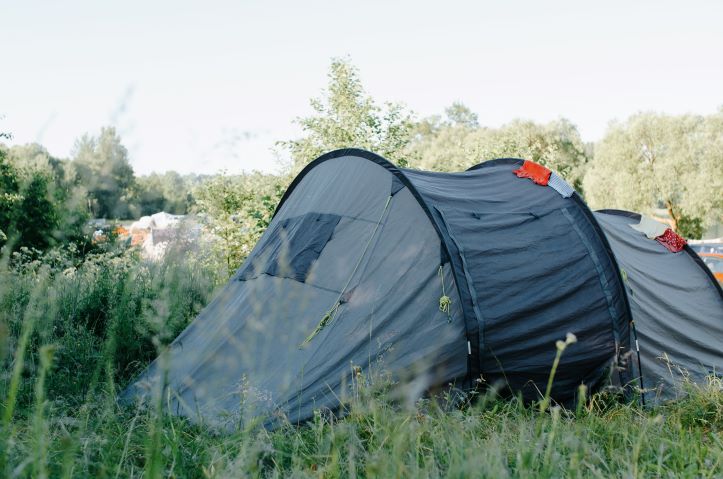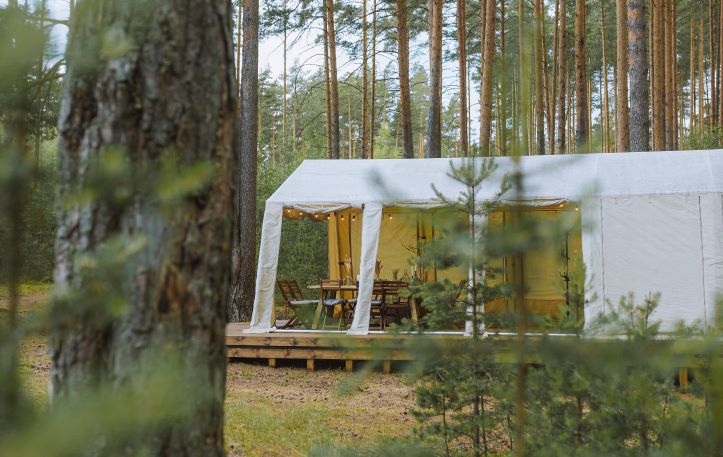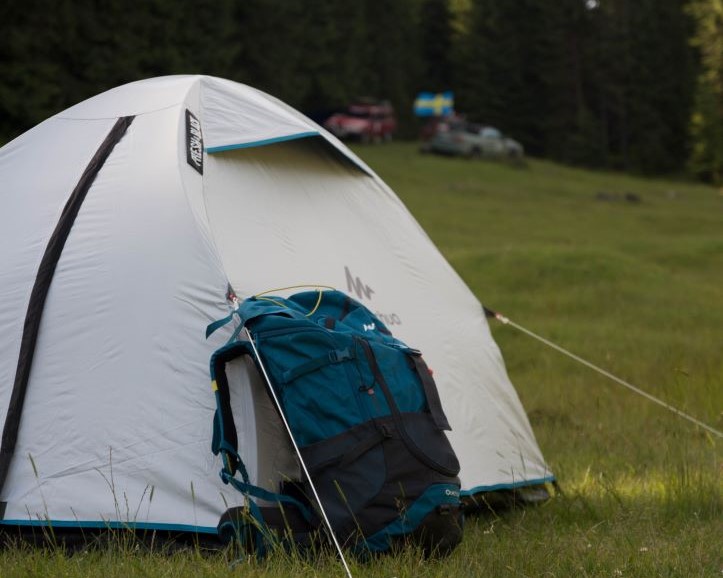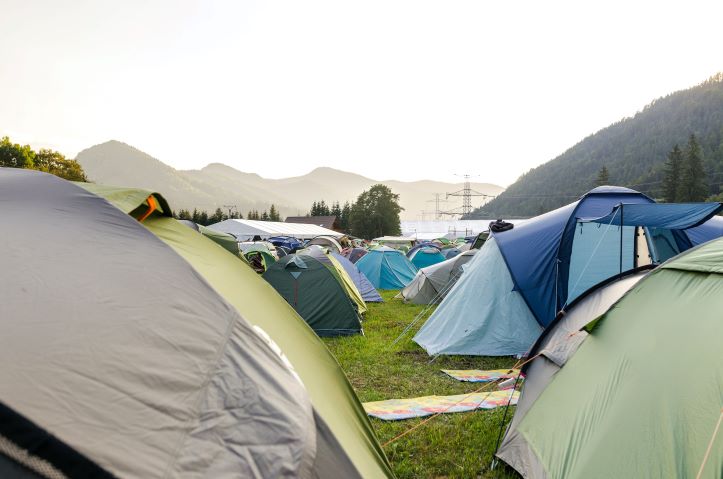Why you should know about What are the 4 types of Tents? Imagine yourself surrounded by nature, breathing in the fresh air, and embarking on an unforgettable adventure. What’s the essential item that can truly make this experience remarkable? Yes, you guessed it – A Tent!
Tents go beyond being simple shelters. They become your cozy abode in the wilderness, your haven against the elements, and your key to endless outdoor possibilities. Whether you’re camping in serene mountains, exploring lush forests, or enjoying beachside bliss, tents play a vital role in enhancing your outdoor escapades.
The popularity and diversity of tents in outdoor activities speak volumes about their significance. They have become an essential companion for nature enthusiasts of all ages, from family camping trips to solo backpacking expeditions. Tents offer a portable and convenient accommodation solution, enabling us to fully immerse ourselves in nature without compromising comfort or safety.
The world of tents is as diverse as the landscapes they inhabit. With a wide array of tent types tailored to specific needs and environments, there’s a perfect tent waiting for you, whether you’re a weekend warrior seeking a quick escape or an intrepid explorer embarking on a multi-day trek.
So, get ready to explore the fascinating realm of tents. In the following sections, we will delve into the four main types of tents, exploring their unique features, benefits, and ideal scenarios. Whether you’re a novice camper or a seasoned outdoor enthusiast, this comprehensive guide will equip you with the knowledge to make informed choices and elevate your outdoor experiences.
Tent Type 1: Dome Tents
When it comes to camping, one of the most popular and versatile tent options is the dome tent. Dome tents are characterized by their distinctive shape, featuring a rounded top and sloping sides. Let’s delve into the world of dome tents, exploring their definition, unique features, benefits, suitable camping scenarios, and even their pros and cons.
Definition and Description
Dome tents are designed with a freestanding structure supported by flexible poles, forming a dome-like shape. This design not only provides stability but also maximizes interior space, allowing campers to move comfortably inside the tent. The sloping sides help shed rain and snow, ensuring a dry and cozy shelter in adverse weather conditions.

Unique Features and Benefits
One of the standout features of dome tents is their ease of setup. With simple pole systems and intuitive designs, these tents can be quickly pitched, making them ideal for campers who value convenience. Dome tents also offer excellent ventilation, thanks to their multiple mesh windows and vents, which promote airflow and minimize condensation.
Moreover, dome tents are known for their durability. The curved design enhances their structural strength, enabling them to withstand strong winds and other challenging outdoor elements. This durability, combined with their lightweight nature, makes dome tents a great choice for backpackers and hikers who prioritize both sturdiness and portability.
Suitable Camping Scenarios and Advantages
Dome tents are suitable for a wide range of camping scenarios. They excel in recreational camping trips, family outings, music festivals, and even backyard adventures. The ample headroom provided by the dome shape allows campers to move around comfortably, sit upright, and even change clothes without feeling confined.
Their versatility extends to various terrains, including forests, mountains, and campgrounds. Dome tents are adaptable and can be used in both mild and moderate weather conditions, making them a reliable choice for three-season camping.
Pros and Cons
As with any tent type, dome tents have their pros and cons. Let’s take a look:
Pros
- Easy and quick setup.
- Spacious interior with ample headroom.
- Excellent ventilation and airflow.
- Good resistance to wind and adverse weather.
- Lightweight and portable.
Cons
- Less stability in extreme weather conditions compared to specialized tents.
- Can be challenging to find suitable pitching spots in rocky or uneven terrains.
Tent Type 2: Tunnel Tents
Tunnel tents offer a unique and practical camping solution for outdoor enthusiasts. In this section, we will explore the definition and explanation of tunnel tents, delve into their design and structural characteristics, discuss the benefits and specific use cases, and weigh the pros and cons.
Definition and Explanation
Tunnel tents, as the name suggests, are designed with a long tunnel-like structure. They feature flexible poles that create a series of arches, forming the distinctive shape of the tent. The structure of tunnel tents provides a spacious and comfortable interior, making them a popular choice among campers.

Design and Structural Characteristics
Tunnel tents are known for their spaciousness and efficient use of space. The elongated shape allows for a generous floor area, providing ample room for campers to sleep, store gear, and move around. The design typically includes separate sleeping compartments and a central living area, offering privacy and organization within the tent.
These tents are constructed with flexible poles that run parallel to one another, forming a series of arches. This design creates a stable structure that can withstand moderate winds and provides good headroom throughout the tent.
Benefits and Specific Use Cases
Tunnel tents offer several benefits that make them suitable for various camping scenarios. Firstly, their spacious interior makes them ideal for family camping trips or group outings, where multiple people need comfortable sleeping arrangements and a communal living space.
Additionally, the layout of tunnel tents allows for better organization. With separate sleeping compartments, campers can enjoy privacy and create designated areas for different activities, such as sleeping, changing clothes, or storing equipment.
Tunnel tents are also suitable for extended camping trips. Their design provides stability and livability, making them well-suited for longer stays in campgrounds or base camps.
Pros & Cons
Let’s take a look at the pros and cons of tunnel tents:
Pros
- Spacious interior with ample headroom.
- Separate sleeping compartments for privacy.
- Efficient use of space and good organization.
- Suitable for family or group camping.
- Provides stability and livability for extended stays.
Cons
- Longer setup time compared to simpler tent designs.
- May require multiple people to pitch due to the length of the tent.
- Less resistance to strong winds compared to dome or geodesic tents.
Tent Type 3: Cabin Tents
Cabin tents are synonymous with comfort and spaciousness, providing a home away from home during camping adventures. In this section, we will explore the definition and overview of cabin tents, describe their unique features such as spaciousness and vertical walls, discuss their comfort, privacy, and family-friendly aspects, and weigh the pros and cons of choosing a cabin tent for your camping needs.
Definition and Overview
Cabin tents are named for their resemblance to a small cabin. They are characterized by their box-like shape, vertical walls, and high ceilings. These tents are designed to offer a roomy and comfortable interior space, making them a popular choice for family camping trips, group outings, or any situation where comfort and ample living space are desired.

Spaciousness and Vertical Walls
One of the standout features of cabin tents is their exceptional spaciousness. The vertical walls, unlike sloping walls in other tent types, maximize the usable floor area, allowing campers to fully stand and move around without feeling cramped. This design provides a sense of openness and freedom within the tent, creating a comfortable living environment.
Comfort, Privacy, and Family-Friendly Aspects
Cabin tents prioritize comfort, making them an excellent choice for those seeking a cozy camping experience. The high ceilings create a more inviting and roomy atmosphere, while the ability to divide the interior into separate rooms or compartments offers privacy and organization. Cabin tents often include features like built-in storage pockets and electrical access points, adding convenience and enhancing the overall comfort level.
Cabin tents are particularly family-friendly, accommodating larger groups with ease. The spaciousness allows for comfortable sleeping arrangements and the freedom to bring additional camping gear or furniture. They offer a comfortable retreat for families to bond and create lasting memories in the great outdoors.
Pros and Cons
Let’s take a look at the pros and cons of cabin tents:
Pros
- Spacious interior with vertical walls and high ceilings.
- Comfortable and roomy living space.
- Ability to divide into separate rooms or compartments.
- Family-friendly and suitable for larger groups.
- Convenient features for storage and electrical access.
Cons
- Bulkier and heavier compared to smaller tent designs.
- Longer setup time due to the larger size.
- Less wind resistance compared to dome or geodesic tents.
Tent Type 4: Backpacking Tents
When it comes to venturing into the great outdoors with limited gear and maximum mobility, backpacking tents are a go-to choice for outdoor enthusiasts. In this section, we will define and introduce backpacking tents, highlight their lightweight, compact, and portable nature, discuss their suitability for hiking, trekking, and adventure trips, and weigh the pros and cons of opting for a backpacking tent.
Definition and Introduction
Backpacking tents are specifically designed for backpackers and hikers who prioritize lightweight gear and ease of transportation. These tents are crafted to be compact and portable, allowing them to be easily carried in a backpack without adding excessive weight. Backpacking tents strike a balance between functionality and weight, making them an essential piece of equipment for those who embark on multi-day hiking or trekking adventures.

Lightweight, Compact, and Portable
One of the key features of backpacking tents is their lightweight construction. They utilize lightweight materials, such as high-tech fabrics and aluminum poles, to minimize weight without compromising on durability and protection. If you have the knowledge that what are tent poles made of, you will understand better. This lightweight design ensures that backpackers can carry their shelter comfortably, even on long journeys.
In addition to being lightweight, backpacking tents are also compact and highly packable. They are designed to be easily folded, rolled, or compressed into a small size, allowing them to fit snugly into a backpack. This compactness maximizes space within the backpack and enables hikers to efficiently utilize their storage capacity for other essential gear. So, you should also know how to fold a tent properly.
Suitability for Hiking, Trekking, and Adventure Trips
Backpacking tents are specifically tailored to meet the needs of hikers, trekkers, and adventure seekers. Their lightweight and compact nature make them an ideal choice for long-distance hikes or multi-day treks where every ounce matters. These tents are built to withstand the rigors of the trail, providing reliable shelter in various outdoor environments.
Their portability also allows for greater flexibility in choosing campsites. Backpacking tents can be set up in more remote and rugged locations, offering hikers the freedom to explore off-the-beaten-path destinations. Whether you’re traversing rough mountains, crossing forests, or embarking on wilderness adventures, backpacking tents offer a reliable and convenient shelter option.
Pros & Cons
Let’s consider the pros and cons of backpacking tents:
Pros
- Lightweight and easy to carry in a backpack.
- Compact and highly packable for efficient storage.
- Suitable for long-distance hikes and multi-day treks.
- Versatile and adaptable to various outdoor environments.
- Enables flexibility in choosing remote campsites.
Cons
- Smaller interior space compared to larger tent designs.
- Less livability and comfort for extended stays.
- Limited headroom and storage capacity.
Tips & Tricks for Taking Care of Your Tent
When gathering knowledge about what are the 4 types of tents, you should also know about how to take care of a tent. Your tent is your home away from home during outdoor adventures, providing shelter, comfort, and protection. To ensure your tent remains in top condition and continues to serve you well for years to come, it’s important to take proper care of it. In this section, we will share some valuable tips and tricks for maintaining and preserving your tent.
Proper Setup and Takedown
Always follow the manufacturer’s instructions when setting up and taking down your tent. Improper handling can lead to damage or wear and tear. Take care to avoid sharp objects or abrasive surfaces that could puncture or tear the tent fabric.
Clean and Dry Before Storage
Before packing away your tent, make sure it is clean and completely dry. Dirt, debris, and moisture left on the tent can lead to mold, mildew, and fabric deterioration. Gently brush off any loose dirt, and if needed, use a mild soap specifically designed for tents to clean any stains or stubborn dirt. Ensure the tent is thoroughly dry to prevent the growth of mold or mildew.
Store in a Dry and Ventilated Area
When not in use, store your tent in a cool, dry, and well-ventilated area. Avoid storing it in direct sunlight, as UV rays can degrade the tent fabric over time. A dry and ventilated storage space helps prevent moisture buildup and ensures the tent remains in optimal condition.
Use a Groundsheet
Using a groundsheet or footprint under your tent provides an additional layer of protection against rocks, sticks, and sharp objects that could damage the tent floor. It also helps minimize moisture transfer from the ground, extending the lifespan of your tent.
Maintain Zippers and Seams
Regularly inspect and lubricate the zippers on your tent to ensure smooth operation. Apply a silicone-based lubricant or zipper wax to keep them functioning properly. Additionally, check the seams for any signs of wear or leakage and address them promptly to prevent further damage.
Handle with Care
Be mindful of how you handle your tent during use. Avoid dragging or forcefully pulling on the tent, as this can strain the seams and poles. When entering and exiting, use the designated door and be cautious not to step on the fabric.
Consider Additional Protection
In harsh weather conditions, consider using additional protection like a rainfly or a footprint. These accessories can provide extra waterproofing and durability, safeguarding your tent from heavy rain, UV exposure, and abrasive surfaces.
Repair Kit
Keep a tent repair kit handy during your outdoor adventures. It should include items such as fabric patches, seam sealer, and replacement parts like pole repair sleeves. Promptly address any damage or small tears to prevent them from becoming larger issues.
Conclusion
We now know about what are the 4 types of tents: Dome Tents, Tunnel Tents, Cabin Tents, and Backpacking Tents. Each tent type has its unique features, benefits, and ideal use cases. Dome tents provide versatility and stability, tunnel tents offer spaciousness and efficient use of space, cabin tents prioritize comfort and family-friendly aspects, while backpacking tents excel in lightweight and portability.
As you embark on your outdoor adventures, it is crucial to choose the right tent that aligns with your needs and preferences. Consider factors such as the number of occupants, the type of terrain you’ll encounter, the duration of your trips, and your desired level of comfort. Selecting the appropriate tent is the key to a successful outdoor experience, providing you with a safe, comfortable, and enjoyable shelter.
Now, get ready to pitch your tent, ignite your sense of adventure, and embark on an incredible journey through the wonderful world of tents!
